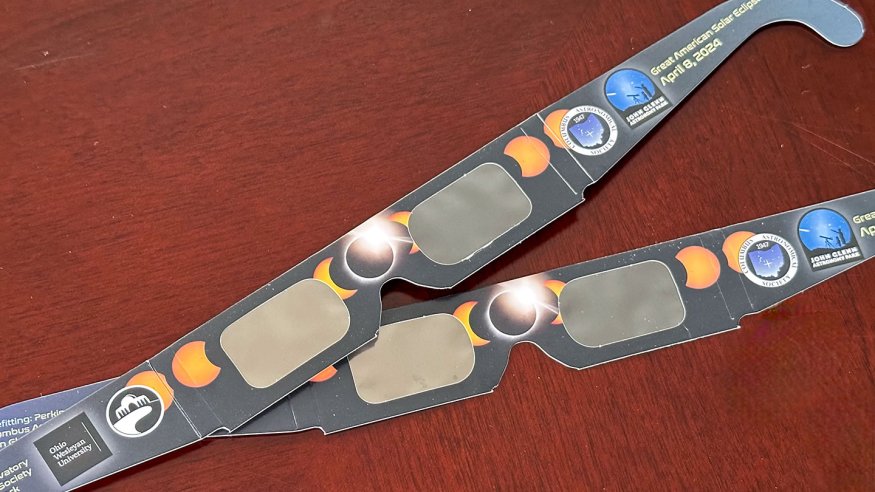
Total Solar Eclipse
Ohio Wesleyan to Hold Campus Viewing Event April 8 at Selby Stadium

In addition to wearing protective eye gear, Ohio Wesleyan University's Bob Harmon, professor of physics and astronomy, has another important piece of advice regarding the April 8 total solar eclipse.
"If you see photos, you might imagine that you know what it's going to be like to experience totality, but your imagination is wrong," Harmon, Ph.D., said during a recent campus lecture. "You really have to experience it. It's really something else."
Not only should everyone take time to watch the astronomical phenomenon, Harmon said, but "I want everybody to gather to have a group experience at seeing it. It's really important to see it as a group because people start screaming, people start shouting, and some people might even start crying."
To bring people together, Ohio Wesleyan is holding a campus eclipse-watching opportunity April 8 at Selby Stadium. Gates will open at 1:30 p.m. to observe the last total solar eclipse that will be visible in Delaware until Sept. 14, 2099.
Everyone is encouraged to bring their own eclipse glasses, though skywatchers will be able to get one free pair at the event, if needed. In addition, eclipse glasses are available, one free pair per person, from 8:30 a.m. to 5 p.m. Monday through Friday at the Hamilton-Williams Campus Center information desk. Additional pairs may be purchased at the desk for $1 each to benefit OWU's Perkins Observatory.
"Eclipse glasses are the only way to safely view the Sun when it is in partial eclipse, that is, when we can still see some of the bright surface layer of the Sun that we normally see," Harmon said.
"During totality, when this layer is completely covered by the Moon, we can see the pearly white outer atmosphere of the Sun, called the corona, along with pink 'prominences' peeking out from behind the Moon that look a bit like licks of flame," he said. "It is perfectly safe to view the Sun during this time with the naked eye, and, in fact, this is the stunning view that people will travel thousands of miles to experience for themselves!"
During the eclipse, the OWU Astronomy Club also plans to set up telescopes at Selby Stadium to project images of the eclipse onto poster boards, which are safe to view at any time without protective eyewear.
A total solar eclipse occurs when the Moon passes between the Sun and the Earth, blocking the Sun from view. The first partial phase of the eclipse will begin at 1:56 p.m., when the Moon begins to move in front of the Sun. Totality begins at approximately 3:11 p.m., when the Moon completely covers the Sun. The second partial phase of the eclipse will start at 3:14 p.m. and end around 4:27 p.m.
After this once-in-a-lifetime phenomenon has come and gone, opportunities to explore the wonders of the sky will continue.
Though it will be closed April 8, Ohio Wesleyan's Perkins Observatory, 3199 Columbus Pike (U.S. 23), Delaware, hosts Friday night skywatches during much of the year. The events are popular and often sell out, so check owu.edu/perkins for ticket information and reservations.
